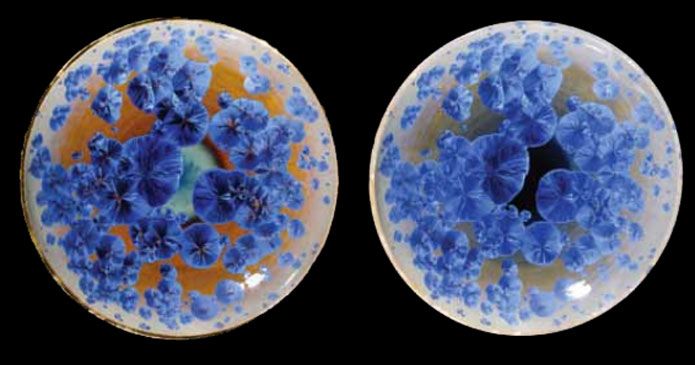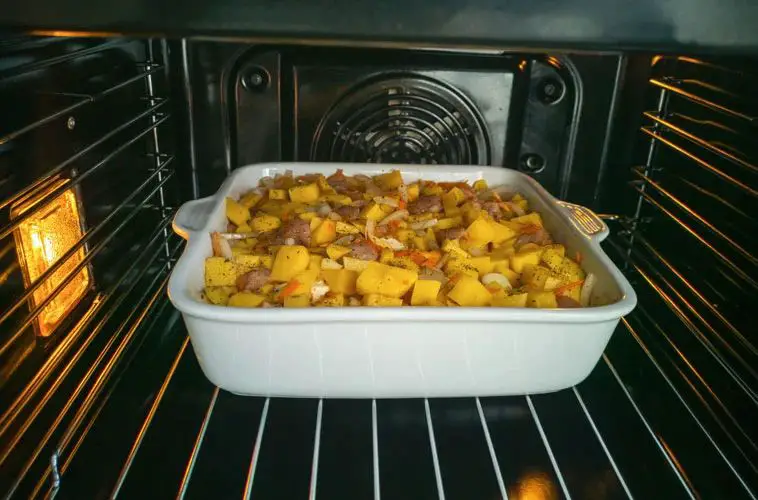When Was Earthenware Invented?
Earthenware is a type of pottery made from clay that is fired at lower temperatures compared to other types of pottery such as stoneware and porcelain. It is one of the oldest forms of pottery, with evidence of production dating back over 25,000 years. Earthenware is porous and opaque, as it contains clay particles that have not fully vitrified. It was one of the earliest uses of pottery, utilized across cultures for a variety of purposes including cooking containers, storage vessels, and decorative objects. Earthenware marked an important development in human history, as pottery enabled more effective food preparation and storage as well as artistic expression.
Earliest Evidence
The earliest evidence of earthenware dates back over 20,000 years ago to the Jomon period in Japan (10000 BCE – 300 BCE). Excavations at the Odai Yamamoto site have uncovered six earthenware vessels from around 16,500-14,920 BCE considered the oldest known pottery in the world.
Some key examples of these earliest earthenware vessels include:
- A round-bottom bowl found inside a pit dwelling at the Odai Yamamoto I site, radiocarbon dated to around 16,500 BCE.
- Fragments of pottery excavated from the Kaminono site, dating to around 15,300 BCE.
- A 15,000 year old pointed-bottom vessel unearthed at the Osaka Yamashita Cho site.
These Jomon vessels provide the earliest evidence of molded clay being fired into ceramic earthenware. They were initially created by hunter-gatherer communities in Japan during the incipient Jomon period. Jomon pottery developed independently without influence from outside cultures and demonstrates some of humankind’s first efforts to form and fire clay into permanent and practical vessels (Oldest Pottery – Smithsonian’s Human Origins).
Origins in Asia
The earliest evidence of earthenware dates back over 15,000 years ago to East Asia. Archaeological discoveries in China and Japan reveal that pottery production emerged during the late Palaeolithic period. According to A Brief History of Chinese Ceramics, some of the earliest known ceramic artifacts include crude clay vessels dating back to around 10,000 BC found at Xianrendong Cave in Jiangxi Province, China.
As early agriculture developed in China around 7000 BC, pottery-making became more sophisticated. The Yangshao culture of the Neolithic Age produced colored earthenware pots decorated with geometric designs. By 5000 BC, the Yangshao were using a slow wheel to shape clay vessels. Over the next several thousand years, Chinese potters developed advanced techniques like high-fire ceramics and glazing. Key innovations included proto-celadon greenware in the Han Dynasty (206 BC – 220 AD) and true celadon during the Song Dynasty (960-1279 AD).
Meanwhile in Japan, the earliest known pottery is the cord-marked type dated to around 12,000 BC. Jōmon ware emerged around 10,000 BC and continued for over 10,000 years until around 300 BC. Jōmon potters created flame-patterned earthenware vessels and figurines, which evolved in complexity over time. The low-fired earthenware was well-suited for cooking and food storage.
Origins in Africa
The earliest known pottery from Africa comes from the Faiyum region of ancient Egypt. Pottery fragments and vessels dating to around 5500 BC have been discovered there. The pottery is handmade from Nile clay and often decorated with painted designs. Pottery from ancient Nubia (modern day Sudan) has also been found dating back to at least 3500 BC.
In West Africa, pottery dates back to around 2500 BC with finds coming from Mauritania and Mali. These early pots were often decorated with geometric patterns made by roulette stamping. The Nok culture of Nigeria created terracotta sculptures and vessels starting around 900 BC. Their pottery features intricate patterns and designs.
Evidence also shows the Bantu-speaking peoples who migrated across sub-Saharan Africa brought knowledge of pottery making with them. The earliest dates for Bantu pottery are around 400 BC in Cameroon. Typical Bantu pottery vessels include jars, bowls, pots, and figurines made from local clays.
Sources:
https://www.contemporary-african-art.com/african-pottery.html
https://hogfurniture.com.ng/blogs/latest-blog/african-history-of-pottery-making
Origins in Europe
Earthenware production originated in Europe during the Middle Ages. The earliest known production was in Germany in the 1300s. It quickly spread across Europe in the following centuries. Germany, France, and Spain became major centers of production by the 15th century.
Tin-glazed earthenware first appeared in Europe in the 16th century, originating in Italy. Italian potters began applying a white glaze containing tin oxide to red earthenware bodies. The most famous early production center was in Faenza, Italy. So popular were ceramics made in Faenza, that almost all tin-glazed earthenware made in Europe eventually became known as faience. (1)
By the 17th century, the production of tin-glazed earthenware had spread across Europe to France, Spain, the Netherlands, and England. The French created their own style of faience in centers like Nevers, Rouen, and Moustiers. The Spanish created a distinctive style of tin-glazed wares known as Majolica. The Dutch created Delftware. The English created their own version of delftware.
In addition to tin-glazed wares, other types of utilitarian earthenware and stoneware for kitchen use became common across Europe by the 17th and 18th centuries. The Staffordshire district in England became a major production center for English stoneware and earthenware.
Origins in the Americas
The first evidence of earthenware pottery in the Americas dates back thousands of years. Indigenous peoples in North and South America independently invented techniques for making pottery without any outside influence. The earliest known pottery in the Americas has been found in South America, dating back as early as 14,000-4,000 BCE in the Valdivia culture of Ecuador. In North America, early examples of earthenware pottery date back to the Archaic period, around 4,000 BCE.
Some of the earliest pottery in North America comes from the Stallings culture along the Savannah River, dating back 4,500 years ago. Further north, the indigenous peoples of the Eastern Woodlands began making earthenware vessels around 3,000 BCE. Native American groups became highly skilled at producing earthenware using local clays and tempering materials. Each tribe developed their own unique styles and methods for forming, decorating, and firing pottery. Well-known examples include the coiled and decorated vessels made the Ancestral Puebloans, and the Caddo tribe’s expertly crafted smooth, red-slipped pots.
Archaeological evidence shows that Native American pottery developed independently across the continents with distinct regional characteristics and purposes. Common vessel forms included wide shallow bowls, jars, and effigy pots made in the shape of animals or humans. Native pottery was both functional ― used for cooking, carrying, and storage ― as well as ceremonial. The patterns and symbols found on many vessels carried cultural meaning and decorative flair.1
Key Developments
Some key innovations that advanced the development of earthenware include:
The potter’s wheel – The potter’s wheel was invented around 4000 BCE in Mesopotamia and allowed potters to create symmetrical pottery more efficiently. According to the Springer article A Brief History of Ceramic Innovation, the potter’s wheel enabled “series production, standardization and better reproducibility of products.”
Glazes – Glazes were first developed around 1500 BCE in ancient Egypt and Mesopotamia. Glazing pottery made it less porous and able to hold liquids better. Glazes also allowed for decorative colors and finishes. As noted by the Ceramics.org article Brief History of Ceramics and Glass, early glazes were made from salt, wood ash, and sand.
Kilns – The first kilns for firing pottery at high temperatures were developed around 500 BCE in ancient Greece. Kilns allowed potters to produce higher quality ceramics by controlling the atmosphere and temperature during firing. Prior to kilns, pottery was fired in open flames which limited the quality. Kilns enabled new techniques like reduction firing which produced black figure pottery in ancient Greece.
Earthenware Production
Earthenware was produced using fairly simple methods in early history. The techniques for constructing earthenware pots can be divided into hand-building and throwing methods. Hand-building involves forming the clay into the desired shape by hand rather than using a potter’s wheel. Some common hand-building techniques include pinch pots, coil building, and slab building https://www.colorado.edu/classics/2018/06/15/production-pottery.
The potter’s wheel was invented during the Neolithic period around 6500 BCE, allowing for more uniform and symmetric shapes. Throwing involves centering a ball of clay on a rotating potter’s wheel and shaping it using hands and simple tools as it spins. Once shaped, earthenware pottery needed to be fired, initially in simple pit-fires or open bonfires fired at low temperatures under 1000°C. The low firing temperatures allowed earthenware to be easily produced but resulted in porous items. Glazes were later developed to make earthenware less porous while retaining its attractive colors https://en.wikipedia.org/wiki/Pottery.
Earthenware Uses
Earthenware has had a wide variety of uses throughout history. Some of the most common uses of earthenware include:
Cooking and Food Storage – Due to its porous nature, earthenware has been heavily used for cooking pots, jars, jugs, plates, bowls and other food storage and preparation vessels for thousands of years. It is well-suited for cooking over open fires and retains heat well. Examples include amphorae used for wine and olive oil storage in ancient times, bean pots in Native American cultures, and tagines used for slow cooking in North Africa (Earthenware).
Tableware – Earthenware has been a common material for plates, bowls, mugs and other eating and drinking vessels across many cultures. It has been popular for its affordability compared to metals and stoneware. Glazed and decorated earthenware tableware became more ornate and colorful from the 14th century onwards in Chinese and European ceramic production (Earthenware | Handcrafted, Glazed, Fired).
Architectural Use – Unglazed earthenware tiles and bricks have been used as affordable and readily available building materials in walls, floors and roofs since ancient times. Glazed earthenware tiles have also been used for decorative architectural purposes. Terracotta remains a common roofing material today (Earthenware).
Artistic Use – The affordability and malleable nature of earthenware has made it a common material for sculptures, statuettes, ceramic vessels and other artistic pieces across many cultures over the centuries. There are many distinctive earthenware artistic traditions, including Greek Tanagra figurines, Pre-Columbian pottery, and Staffordshire figures (Earthenware | Handcrafted, Glazed, Fired).
Conclusion
In summary, the evidence shows earthenware was first invented during the late Paleolithic period around 29,000–25,000 BC. For thousands of years after, earthenware was the only type of pottery produced across cultures from Asia, Africa, Europe and the Americas. The key developments that enabled the production of earthenware were the firing of clay figurines and vessels at low temperatures, the creation of basic glazes, and the invention of the potter’s wheel. Earthenware’s porous nature and ability to be shaped, decorated and fired at low temperatures led to its ubiquitous use for cooking pots, storage vessels, religious figures, architectural decorations and utilitarian items across many ancient civilizations.


